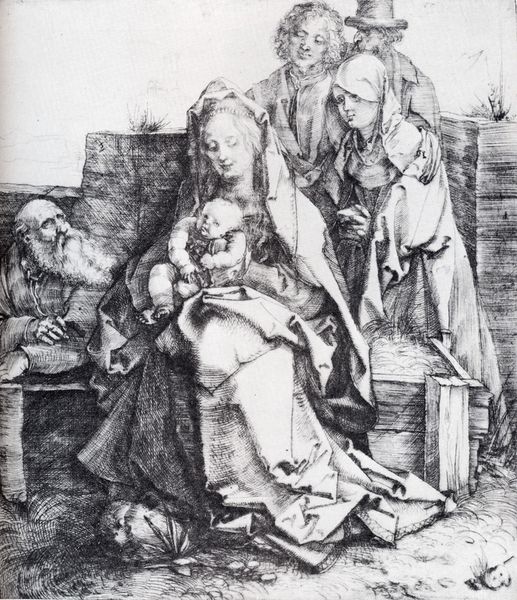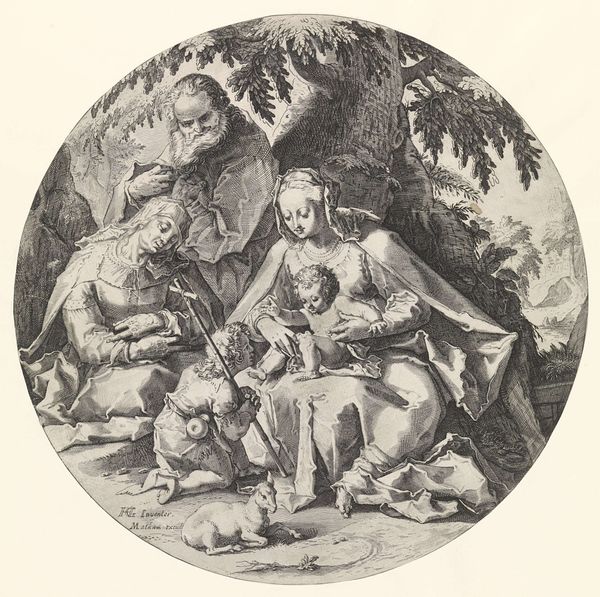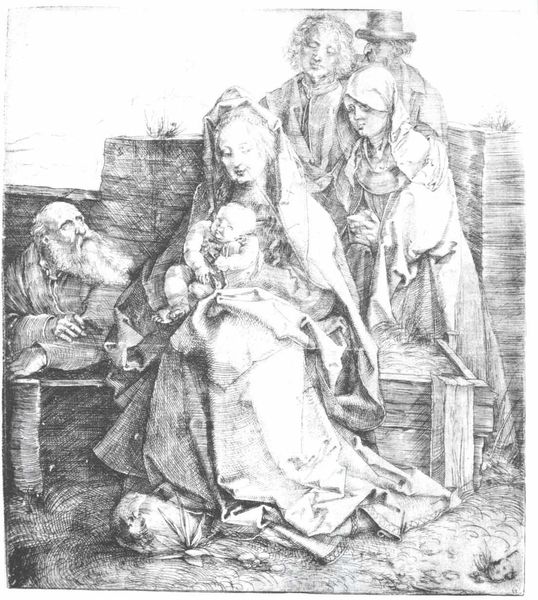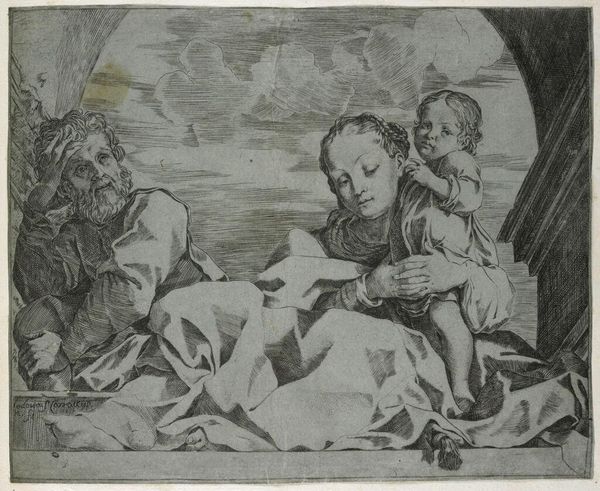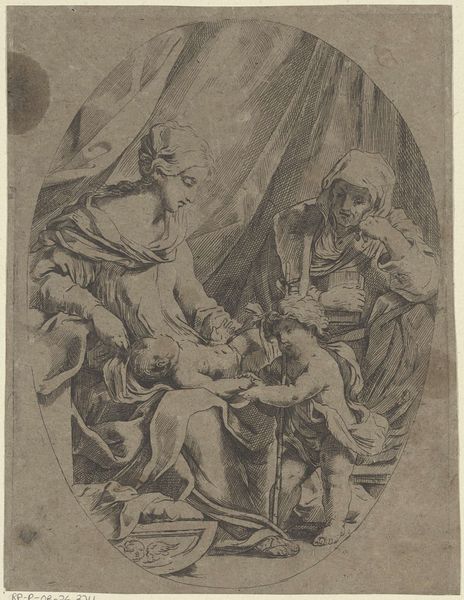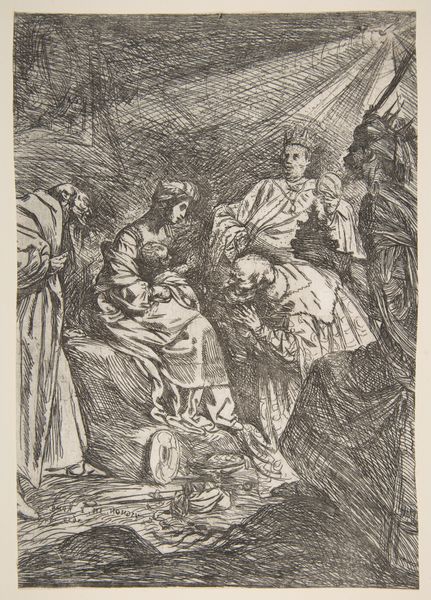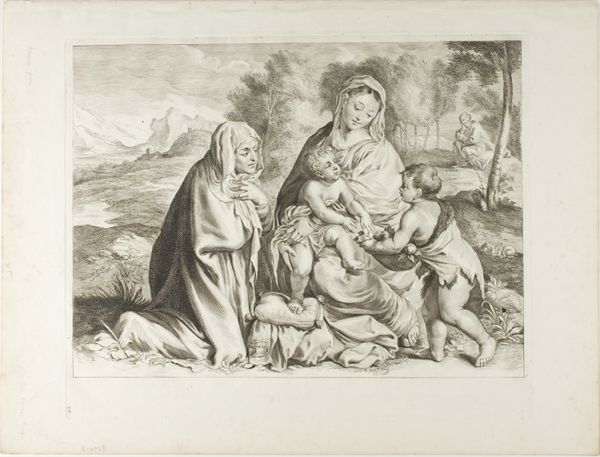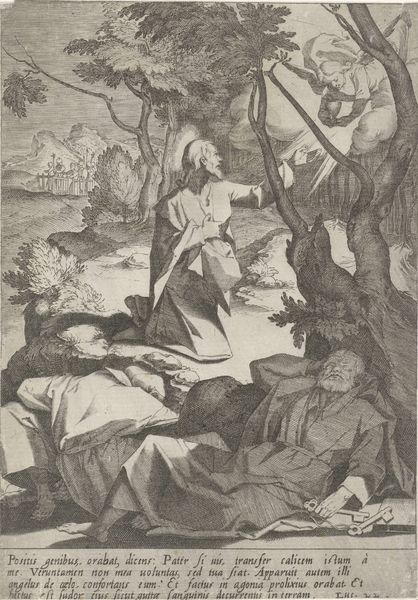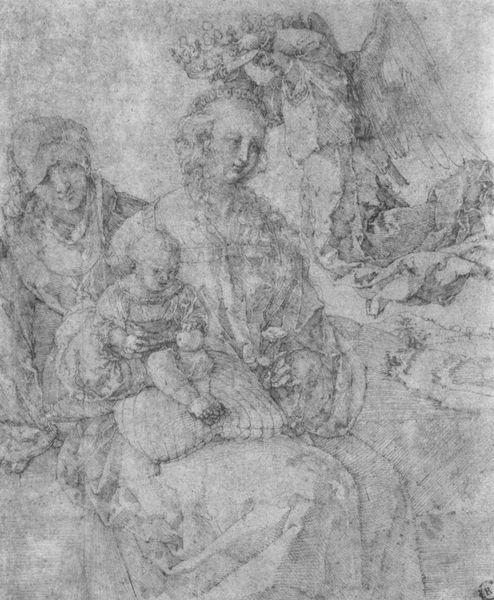
drawing, paper, pencil
#
portrait
#
drawing
#
figuration
#
paper
#
pencil drawing
#
pencil
#
pencil work
#
history-painting
#
academic-art
#
italian-renaissance
Dimensions: 199 mm (height) x 346 mm (width) (bladmaal)
Curator: This is “Madonna del Sacco,” a pencil drawing on paper, likely created between 1486 and 1530. It resides here at the SMK, Statens Museum for Kunst. Editor: My immediate response is to its almost ethereal quality. The delicate pencil work lends a softness to the figures, despite the clear definition of forms. Curator: Indeed. The medium contributes greatly to the viewing experience. We see here a composition built around a central grouping of the Madonna and Child, balanced by a figure, presumably Saint Joseph, positioned to the left, all within a semi-circular format typical of lunettes designed for placement above doorways. The Renaissance embraced classical symmetry and harmony, which we see manifested in this carefully structured image. Editor: And how interesting to consider this was very likely destined for architectural integration. Beyond just decoration, the drawing evokes a spiritual authority sanctioned and mediated by the Church's location. What are your thoughts on the symbolism embedded in what otherwise reads as a familiar maternal scene? Curator: Symbolically, consider the book held by Saint Joseph; a direct allusion to scripture and thus, divinely ordained wisdom. The way the artist uses light and shadow is compelling—the drapery folds of the Madonna’s garments seem to flow around her figure, giving both volume and movement, but without unnecessary visual complication. This is not simply about mimicking reality, it’s about constructing a believable spiritual presence. Editor: I find the choice of representing this holy scene with such austerity particularly significant. What statement might the artist have wanted to communicate by removing material opulence and focusing solely on figures with understated emotions? Curator: Perhaps an emphasis on faith, not earthly possessions. This style directs our gaze inward, promoting reflection on their sacred status. Its accessibility may reflect broader religious changes afoot at that time and even subtly hint at reforming ideas about religious imagery. Editor: The stark nature is undoubtedly fascinating when you put it in historical perspective. Its apparent simplicity invites speculation about its creator’s intent and broader culture surrounding religious imagery at this crucial transition time. Thank you for shining more light on the complex context that shapes our view of "Madonna del Sacco.” Curator: The beauty is definitely revealed by a layered approach of artistic elements that blend art historical and theoretical considerations. Thank you.
Comments
No comments
Be the first to comment and join the conversation on the ultimate creative platform.
